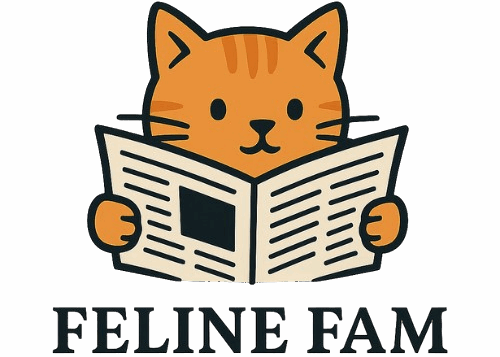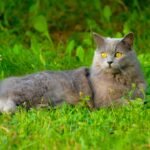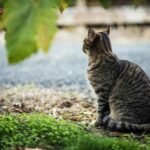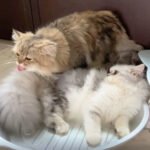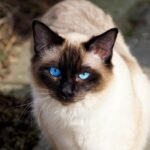When stepping into any veterinarian’s office, you’ll notice the walls covered with adorable photos of every imaginable cat breed. Yet behind those warm smiles and encouraging words lies a hidden truth that many vets wish they could share more openly. Certain beloved cat breeds carry health burdens so significant that experienced veterinarians privately worry about recommending them to first-time cat owners.
These aren’t arbitrary opinions based on personal preference. They’re concerns rooted in decades of clinical experience, genetic research, and countless late-night emergency calls. While every cat deserves love and proper care, some breeds require such intensive medical management that they can overwhelm unprepared owners both emotionally and financially.
Persian Cats: Beauty Comes at a High Price

Persian cats are among a class of cats known to be brachiocephalic, meaning they have a short skull. This adorable flat face that makes them look like living teddy bears comes with serious health consequences that many new owners don’t anticipate.
Unfortunately for many Persians this translates frequent respiratory issues, eye issues, and skin issues, if that wasn’t enough they can sometimes carry the gene for polycystic kidney disease (PKD) which leads to unmitigable kidney failure at a relatively young age. Some Persians struggle so badly with breathing that they require expensive surgical procedures just to survive comfortably.
Scottish Fold: The Painful Truth Behind Those Adorable Ears

The Scottish Fold, with its cute folded ears, looks like a teddy bear. However, those ears aren’t just for show. They can lead to painful cartilage issues as the cat ages. What many people don’t realize is that the genetic mutation causing those endearing folded ears affects the entire body.
The cartilage defect that produces the folded ear appearance causes cats to suffer from a cartilage deformity throughout the body. This results in joint and mobility problems, arthritis, and chronic pain. Even celebrity endorsements from stars like Taylor Swift haven’t changed the veterinary community’s deep concerns about this breed’s welfare.
Munchkin Cats: When Short Legs Mean Long-Term Problems

The Munchkin, with its distinctive short stature, looks like a perpetual kitten. But behind the cuteness lies a concern: their skeletal structure can lead to joint and spine issues. These cats face mobility challenges that can worsen significantly as they age.
Although some registries have refused to accept the breed because of potential health concerns (the short legs are a genetic mutation, after all), TICA accepted them in 1995. The ongoing debate within veterinary circles reflects genuine concerns about the ethics of breeding cats with intentional skeletal deformities.
Manx Cats: The Hidden Spinal Risks

The Manx cat, known for its taillessness, has a captivating charm. However, this unique feature can be a double-edged sword. Manx cats are prone to spinal problems due to their genetics, which can lead to severe discomfort. The same gene that eliminates the tail can cause serious developmental issues throughout the spine.
These spinal defects can manifest in various ways, from mild mobility issues to complete paralysis in severe cases. Many Manx cats require ongoing veterinary monitoring and potential surgical interventions that unprepared owners might not expect.
Himalayan Cats: Combining the Worst of Both Worlds

The Himalayan cat is a beautiful Asian breed with long hair and a “smooshed” face. They are a cross between Persians and Siamese, and they’re incredibly docile and lovable. Unfortunately, this breeding has combined health problems from both parent breeds.
The Himalayan is a brachycephalic breed, which means they have a broad, short skull. This can lead to difficulty breathing due to the compression of the sinuses and nasal passages. Himalayans may be more susceptible to upper respiratory infections. Polycystic kidney disease is a hereditary condition that causes enlarged kidneys and kidney dysfunction. It typically shows between 7 and 10 years of age, though it can show up earlier.
Maine Coon and Ragdoll: Big Hearts, Big Problems

Both Maine Coons and Ragdoll cats face significant risks from hypertrophic cardiomyopathy, a heart condition that can be devastating. Hypertrophic cardiomyopathy (HCM) is a common heart disease characterized by thickened and enlarged heart tissue. This disease decreases cardiac output, which can result in thrombus formation and congestive heart failure.
Maine Coon cat hypertrophic cardiomyopathy (HCM) usually does not show up until they are an adult although the genetic mutation is present at birth. In Maine coon cats that develop severe disease, HCM typically manifests in males between 2-5 years of age, though it can occur earlier or later. The silent nature of this disease makes it particularly heartbreaking for unsuspecting families.
Savannah Cats: Wild Hearts, Domestic Problems

The Savannah cat – part African serval and part domestic cat – is recommended only for experienced owners. Despite not being fully domesticated, Savannah cats can be friendly with people. But they tend to have unpredictable, active, and bold temperaments. These cats require specialized care that many veterinarians aren’t equipped to provide.
Hybrid cats, especially those closely related to their wildcat parent, often do not cope well as pets. They are likely to exhibit temperamental characteristics akin to their wild relatives. They are territorial and are often large and powerful, risking harm to owners, to other pets, and to local wildlife populations. Many states have restrictions on ownership, reflecting the serious concerns about these cats in domestic settings.
Abyssinian Cats: The High-Energy Health Risks

Are Abyssinian cats prone to any genetic health issues? Yes, while generally healthy, they may be predisposed to conditions like gingivitis and patellar luxation. Pyruvate kinase deficiency (PKD) is an enzyme involved in red blood cell energy metabolism, and its deficiency can cause hemolytic anemia in affected cats. Fortunately, this is a recessive trait, which means that both parents would need to carry the gene for the offspring to be affected.
Beyond genetic concerns, Abyssinians present behavioral challenges that can quickly overwhelm new cat owners. These cats love adventure – exploring, jumping, chewing, and chasing are some of their favorite activities. So, if you’re looking for a quiet kitty to curl up in front of the fire with, the Abyssinian may not be for you. If these cats are not given plenty of opportunities to leap, run, and exercise, they may become bored and frustrated, which can manifest as destructive or even aggressive behavior.
The Veterinary Perspective on Responsible Breeding

Cat breeding, and indeed animal breeding in general is an ethically debated subject. While there is nothing wrong with owning a so called “pure” bred, whether for aesthetic purposes or because you love their temperament, I tend to believe that it is kinder to leave these things to nature.
But I ask them: Have they ever been asked to euthanize healthy kittens and cats because there are more felines than homes? Both as a veterinarian and animal-loving person, I am firmly on the rescue side, not the breeding side. This sentiment echoes throughout veterinary practices worldwide, where professionals witness firsthand the consequences of breeding for appearance over health.
Conclusion

The harsh reality is that veterinarians often find themselves caught between professional diplomacy and genuine concern for animal welfare. While they can’t outright discourage clients from choosing these breeds, many quietly hope that prospective owners will do their research and consider the long-term implications.
These nine breeds represent some of the most challenging cases that veterinary professionals encounter regularly. The combination of genetic health issues, behavioral challenges, and intensive care requirements can quickly overwhelm even well-meaning families. Before falling in love with any particular breed, consider whether you’re truly prepared for potentially decades of specialized medical care, behavioral management, and significant financial investment.
What surprises you most about these veterinary concerns? Have you experienced any of these challenges with your own feline companion?
